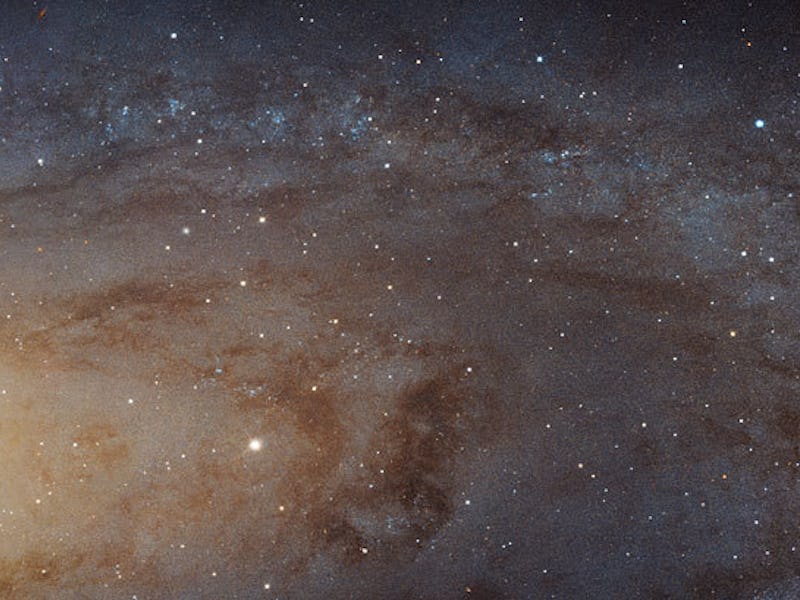Astronomers Define “Big” Then Discover the Biggest Structure in the Universe
The BOSS Great Wall is the most expansive collection of galaxy superclusters we've ever seen.

Grasping the enormity of the universe is hard and getting harder. It’s difficult enough, after all, to comprehend the size of our own solar system, let alone our galaxy. A new study in the journal Astronomy and Astrophysics, however, asks us to get real heady and consider a structure far bigger than the Milky Way. An international research team of astronomers has just discovered something called the BOSS Great Wall, and it’s bigger than any cosmic structure we’ve ever laid telescopic eyes on before — at least, judging by their definition of “big.”
The BOSS, a complex made up of 830 galaxies weighing 10,000 times as much as the Milky Way, is a universal structure known as a wall, existing about 5 billion light years away from Earth. Measured from end to end, it’s about 1 billion light years across — our galaxy, in comparison, is only a scant 100,000. This thing is, to quote another massive entity composed mostly of nothingness, yooooooge.
The universe’s endless void is dotted with isolated island of densely packed cosmic matter. These “overdensities” are made up of hundreds of galaxies bound together, by gravity, into increasingly complex structures. The Milky Way, for example, is part of a group of fellow galaxies known as The Local Group, which is in turn part of the Virgo Supercluster, which is in turn part of the Laniakea Supercluster. The highest level on this sizeist hierarchy is the wall, which comprises a solid line of superclusters. It seems that the BOSS is the greatest wall we’ve discovered yet.
The BOSS Great Wall weighs 10,000 times as much as our measly Milky Way, pictured above.
Before the BOSS, a structure called the Sloan Great Wall held the title of Universe’s Biggest Thing, but the new discovery is two-thirds larger than it or anything we’ve ever seen before. The name BOSS — short for the Baryon Oscillation Spectroscopic Survey — is more than fitting.
Defining what constitutes a wall, however, is still up for debate. University of Hawaii astronomer Brent Tully has admitted that the new structure does indeed contain five times the number of galaxies as your average patch of sky but has pointed out that it’s hard to tell whether its component parts are actually all moving together. If not, can you really say its insides all comprise a single unit? Likewise, astronomer Alison Coil of the University of California San Diego has questioned why the BOSS structure, with all its kinks and bends, is being considered a single entity at all.
It’s hard to say. But regardless of how you classify it, the new Great Wall, with a volume ten times that of the Sloan Wall, has at the very least overwhelmed astronomers with its enormity — like a boss.